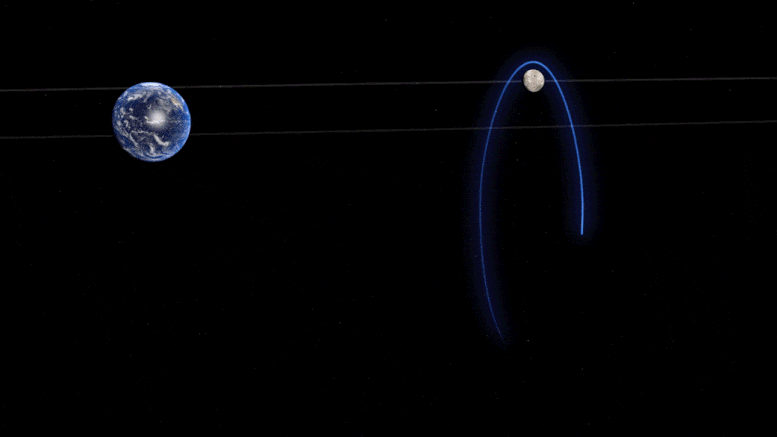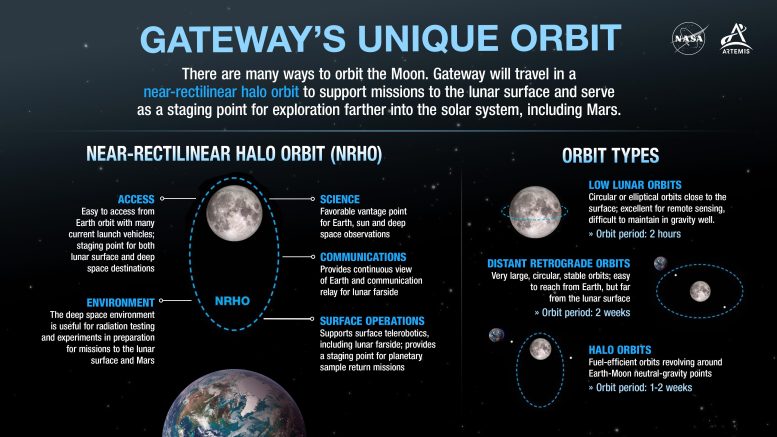The Gateway space station hosts the Orion spacecraft and SpaceX’s deep space logistics spacecraft in a polar orbit around the Moon, supporting scientific discovery on the lunar surface during the Artemis IV mission. Credit: NASA
A unique halo orbit is the road less traveled around the Moon.
As NASA prepares for humanity’s long-term return to the lunar surface through the Artemis missions, the agency is introducing novel concepts – backed up by science and decades of experience in human spaceflight – to blaze new trails on and around the Moon.
An international collaboration, Gateway is a human-tended, small station that will orbit the Moon. The lunar outpost is specially designed to enable deep space exploration with many capabilities for maintaining a sustained presence in space and conducting research in a deep space environment. Features like a human habitat, multiple docking ports for a variety of spacecraft, including Orion, and the ability to host experiments that will study space weather will all help contribute to future exploration efforts. Similarly, Gateway’s unique near-rectilinear halo orbit, or NRHO, was specifically chosen to help ensure the success of future Artemis missions.
There is no shortage of options for how a spacecraft could orbit the Moon, but two in particular – low lunar orbit and distant retrograde orbit – are helpful for understanding why NRHO is the right fit for Gateway.
A spacecraft in low lunar orbit follows a circular or elliptical path very close to the lunar surface, completing an orbit every two hours. Transit between Gateway and the lunar surface would be quite simple in a low lunar orbit given their proximity, but because of the Moon’s gravity, more propellant is required to maintain the orbit. Therefore, low lunar orbit is not very efficient for Gateway’s planned long-term presence at the Moon – at least 15 years.
Meanwhile, a distant retrograde orbit provides a large, circular, and stable (or more fuel-efficient) orbit that circles the Moon every two weeks. However, what Gateway would gain in a stable orbit, it would lose in easy access to the Moon: the distant orbit would make it harder to get to the lunar surface.
A third option, NRHO, is just right for Gateway, marrying the upsides of low lunar orbit (surface access) with the benefits of distant retrograde orbit (fuel efficiency). Hanging almost like a necklace from the Moon, NRHO is a one-week orbit that is balanced between the Earth’s and Moon’s gravity. This orbit will periodically bring Gateway close enough to the lunar surface to provide simple access to the Moon’s South Pole where astronauts will test capabilities for living on other planetary bodies, including Mars. NRHO can also provide astronauts and their spacecraft with access to other landing sites around the Moon in addition to the South Pole.
The benefits of NRHO don’t end with surface access and fuel efficiency. NRHO will allow scientists to take advantage of the deep space environment for a new era of radiation experiments that will inspire a greater understanding of potential impacts of space weather on people and instruments. NRHO will also give Gateway a continuous line of sight, or “view,” of Earth, translating to uninterrupted communication between Earth and the Moon.
Check out this infographic to learn more about NRHO and what it looks like:







